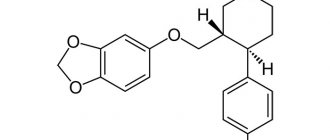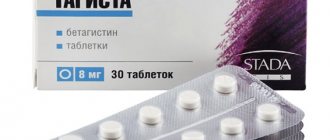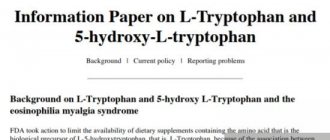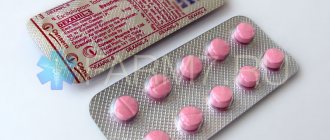How effective is a medication like Citalopram? Reviews from doctors about this drug are discussed in this article. It also contains information about what side effects the drug in question causes, how it should be taken correctly, and what pharmacodynamic characteristics it has.
Some side effects may be serious
If you miss a dose, take it as soon as you remember. However, if it is almost time for your next dose, skip the missed dose and continue with your regular dosing schedule. Do not take a double dose to make up for a missed dose. Citalopram may cause side effects. Tell your doctor if any of these symptoms are severe or do not go away. Nausea, diarrhea, vomiting, stomach pain, indigestion, loss of appetite, loss of appetite, frequent urination, excessive sweating, loss of strength, muscle or joint pain, difficulty having sexual intercourse in sexual desire or ability, heavy menstrual periods. Side effects that do not usually require medical attention (tell your prescriber or health care professional if they continue or bother you): ankles or calves, or blisters or unusual bruising, headache or stability, problems with thinking, concentrating, or remembering . Swelling of the face, throat, tongue, lips, eyes, hands, feet. . Sitalopram may reduce appetite and cause weight loss in children.
Composition, description of the medicinal product, its form and packaging
In what form can Citalopram be purchased? Reviews from patients claim that in pharmacy chains this product is sold in the form of biconvex and round tablets, coated with a white film coating. On cross-section, this medicine has a slightly yellowish inner layer.
Your child's doctor should monitor your child's growth closely. Talk to your child's doctor if you have problems with your child's height or weight while you take this drug. Talk to your child's doctor about the risk of passing citalopram to your child.
Symptoms of overdose may include the following
Dizziness, nausea, vomiting, uncontrollable fear of any part of the body, fast or irregular heartbeat, memory loss, seizures, rapid breathing, bluish discoloration around the mouth, fingers, or nails. Don't miss any appointments with your doctor. Your doctor may order an electrocardiogram to monitor your heart rhythm and heart rate while you take citalopram.
What is included in the composition of the drug "Citalopram"? Instructions and reviews report that the active ingredient of this medicine is the substance of the same name - citalopram, which is presented in the form of hydrobromide. As for the auxiliary components, microcrystalline cellulose, pregelatinized starch and
Do not let anyone else use your medications. Ask your pharmacist how you can refill your prescription. It is important that you keep a written list of all the medications you take, including those you fill with a prescription and those you buy over the counter, including vitamins and nutritional supplements. You should have a list every time you visit your doctor or when you are admitted to the hospital. This is also important information in emergency situations.
Beaulieu conducted this study, which looked at 33 randomized trials published in scientific journals. Data were processed and coded using the autism-specific scoring system developed by Reichow et al.
It should also be noted that the film shell of this product consists of polyvinyl alcohol, opadry II, macrogol, talc and titanium dioxide.
The medicine in question goes on sale in contour cells made of PVC or aluminum, which are packaged in cardboard boxes.
Effect on the heart and blood vessels
Ethanol triggers the release of adrenaline. This hormone increases heart rate and blood pressure. While taking an antidepressant, the effect of alcohol on the cardiovascular system increases. An attack of tachycardia and a sharp rise in blood pressure may occur. In elderly patients, the combined use of antidepressants with alcoholic beverages often caused heart attacks and strokes.
Pharmacodynamic features of an antidepressant
What is the drug "Citalopram"? Reviews claim that this is an antidepressant. Its mechanism of action is associated with the suppression (selective) of the reuptake of the neurotransmitter serotonin located in the synapses of nerve cells, as well as with minimal effects on the reuptake of the mediators dopamine and norepinephrine. It should be noted that this drug does not exhibit the ability to react with a number of receptors (with some serotonin, dopamine, H1-histamine, adrenergic receptors, m-cholinergic receptors, GABA receptors and benzodiazepine receptors).
During a year. This implies a gigantic business with figures ranging from $200 to $500 million, not including the large number of children who are exposed to other types of chemicals outside of medical supervision. Of course, the level of research conducted on this issue has increased dramatically, both in drug research and in other chemical compounds from the official line.
The study focused on the impact of autism on one's own behavior. However, the study authors emphasize that although the number of studies has increased significantly, there are still 6 factors that hinder this process.
It should also be said that the drug “Citalopram”, reviews of which are listed below, helps improve the patient’s mood, suppresses anxiety, reduces feelings of fear, tension, eliminates dysphoria, and also relieves obsessive states. In addition, it almost never causes a hypnotic effect.
Results of the drug review. Clonidine: Insufficient data for low quality studies and lack of replication. Guanfacina: Insufficient data due to low quality of studies, small sample size, and use of non-standardized measures. Further research is required.
Risperidone: This is a drug with a lot of research done. Studies have provided evidence of the effectiveness of risperidone in treating irritability and hyperactivity in children with autism and preliminary evidence of effectiveness in reducing repetitive and stereotypic behaviors. Many studies have also shown positive results for other outcomes such as hyperactivity and stereotyping.
According to experts, a stable effect of this medication is observed 7-10 days after constant use.
Kinetic ability of the drug
What pharmacokinetics are characteristic of the drug "Citalopram"? Reviews report that the peak concentration of its active substance in the blood occurs four hours after administration. Moreover, changes in its level are linear.
Daily Autism Note: However, after reviewing the studies used for this systematic review, we find the following limitations.
- The duration of the research does not exceed 90 days.
- In almost all cases, administration is oral.
- More than 80% of cases exhibit adverse side effects.
- They represent a significant increase in triglyceride levels in the blood.
Aripiprazole: Research provides compelling evidence of the effectiveness of aripiprazole in reducing irritability, hyperactivity, and stereotypy in children with autism.
The bioavailability of this drug is close to 80%, and the binding to plasma proteins is 79%.
In the blood, citalopram is present in its original form. This substance is transformed by oxidation, demethylation and deamination. The half-life of this component is 1.5 days. It is evacuated along with urine and through the intestinal tract.
Jerrell, which warns of an increase in blood fat levels in children after 6 weeks of taking it, were not included in the evaluation of this drug; Or a higher prevalence of type 2 diabetes or cardiovascular disease in the cohort studied. In its favor, which does not cause metabolic problems, as happens in other drugs.
In turn, the placebo effect accounts for 30-40% of cases. Haloperidol: These studies suggest use for serious behavioral cases. It is effective in 50% of cases. Olanzapine: Insufficient evidence of low quality studies, small sample size. This shows excess weight.
pharmachologic effect
The drug "Cipramil", reviews of real patients about which are presented below in this article, is a very effective antidepressant. The medication does not differ in its ability to bind to receptors. According to the instructions, it inhibits cytochrome P450IID6, due to which it does not interact with other drugs that are directly metabolized by this enzyme.
The drug does not affect the functioning of the cardiac conduction system, blood pressure, liver function, or hematological parameters. The declared antidepressant effect appears after 2-4 weeks of systematic use. Using the medication on a regular basis does not cause the patient to gain weight.
After oral use, the bioavailability of the active ingredient is approximately 80%. Its maximum concentration in the blood is reached approximately 2-4 hours after administration. The active substance of the drug is excreted along with feces and urine.
Indications for prescribing an antidepressant
Why do you need a product like Citalopram? Reviews from doctors claim that this medication is indicated for use when:
- panic disorders;
- severe and moderate depressive episodes.
It should also be noted that only an experienced specialist should prescribe this medicine.
High placebo effect and conflicting results. Lamotrigine: Insufficient data due to poor quality of studies. There was no evidence of an effect on irritability or social behavior across multiple measures in the study. The study did not use a mood disorder diagnosis in its inclusion criteria, possibly limiting the generalizability of the results.
Clinical trials of 20 children met the review criteria. Based on this classification, there is preliminary evidence of the effectiveness of atomoxetine for hyperactivity. It also has unwanted side effects. Reported positive effects on repetitive behaviors but rated as weak. Methylphenidate: One study received a strong research grade.
Contraindications to medication use
For what conditions should you not use Citalopram?
Reviews indicate the following contraindications to the use of this medicine:
- the patient’s minor age (according to the instructions, the safety and effectiveness of using such tablets at this age have not been established);
- high sensitivity of the patient to citalopram, as well as to any of its excipients;
- when taken simultaneously with monoamine oxidase inhibitors, including moclobemide, selegiline, linezolid (within two weeks after stopping their use);
- while taking medications that prolong the QT period on the ECG (including pimozide), as well as with congenital prolongation of this interval).
Antidepressant "Citalopram": instructions for use
Reviews from experts claim that the drug in question should be prescribed depending on the patient’s condition. Citalopram is taken orally, once a day. In this case, the tablets are not chewed and washed down with a small amount of liquid.
Everyday Autism Note. The three selected studies, involving 66 participants, showed a side effect rate of almost 38% of cases. Amantadine: There was adequate resistance testing in this study, but conflicting results were obtained from surveys. It shows no improvement in irritability and hyperactivity.
Donepezil: Insufficient evidence of poor quality studies and lack of replication. The researchers found significant improvements in hyperactivity across three measurement systems. Results in other studies were scattered and showed conflicts, although some reported impressive effects across a range of topics and noted that the populations sampled were very heterogeneous. Be the best quality We understand that the study on this drug must be replicated.
This medication can be used at any time of the day, regardless of meals (preferably at the same time).
For depression, therapy begins with taking 20 mg of the drug per day. Depending on the patient’s personal reaction, as well as the severity of depression, the dosage can be increased to the maximum, that is, up to 40 mg per day.
How should you take Citalopram? Reviews from patients say that in this case, this drug is prescribed at a dosage of 10 mg per day (for 1 week), and then it is increased to 20 mg per day. However, the daily dose of this medicine may depend on the patient’s personal reaction. In the future, the indicated amount of the drug can be increased to 40 mg per day.
Penoxifylline: A clinical trial compared the effects of risperidone versus risperidone and pentoxifylline in 40 children and reached study level. Further research is needed to confirm and extend these results.
Comparative system of indicators
According to the authors of the review study, new doors are open for the use of drugs to intervene in autism spectrum disorders. This review gives a little more information about the large number of medications aimed at reducing disruptive behavior, hyperactivity, and aggression. According to the study, risperidone and aripiprazole would be the two higher quality drugs as a result, confirming other previous studies.
For persons over 65 years of age, Citalopram is prescribed at a dose of 10 mg. Depending on the severity of depression and individual response, it may be increased to a maximum of 20 mg per day.
In case of impaired renal function, including chronic renal failure of moderate and mild severity, adjustment of the dosage regimen of this drug is not required. For persons with severe renal failure, special care is required in selecting a therapeutic dose.
However, we recognize that the number of subjects in the studies was always low, with the exception of one case where more than 160 subjects were included. We recognize that the incidence of adverse side effects remains prohibitively high, as well as the placebo effect. That there are no studies yet that evaluate the long-term use of this type of medication. Interestingly, the best information regarding long-term administration of risperidone is a case report by Dr. José Manuel Lopez et al.
We remain very concerned about the lack of research on the effects of this type of medication on children's brain and neurodevelopment when administration of this type of medication begins in childhood and continues over a long period of time. Although many medications administered to the pediatric population are not recommended before age 6 years, they are administered from age 3 years. We know this is true and that many doctors downplay the fact that a child is taking this type of drug. We understand that, as stated in the article published yesterday, “rational use of the drug” seems to have ceased to be the main goal.
For impaired liver function, including moderate to mild liver failure, the initial dosage of this drug is 10 mg per day (during the first 2 weeks). Depending on personal reaction, it may be increased to 20 mg. Persons with severe liver failure require special care in dose selection.
The fact that certain requests are intended to address a behavioral situation or sensory disorder based solely and exclusively on drug treatment, we believe is a mistake. If a child with autism receives therapy and their behavior improves without receiving any medication and another child who receives medication but no therapy shows the expected progress but is "calm" or their unwanted behavior decreases until they are taken off the medication .
So is medicine the solution? Treatment recipes? Is the medicine used as an adjuvant for therapy in severe cases? From our position, we understand that the medicine must be used under strict and strict medical supervision and only as an adjuvant for therapy and that it must have an expiration date.
For people with low activity of an isoenzyme such as CYP2C19, the initial dosage is 10 mg per day (for 2 weeks). Depending on personal reaction, it may be increased to 20 mg.
According to the instructions, the therapeutic effect after taking the antidepressant in question appears after 2-4 weeks. In this case, the duration of the course of therapy is determined by the patient’s condition and tolerability of the treatment. As a rule, it is recommended to take this drug for about 6 months.
What should you remember before using it?
Therapeutic and therapeutic treatments for autism: A systematic review. Citalopram is an antidepressant belonging to the group of selective serotonin reuptake inhibitors and is indicated in treatment. This risk remains until significant improvement is achieved. Because such improvement may not be achieved within the first few weeks or more of treatment, patients. The use of citalopram has been associated with the onset of akathisia, characterized by agitation and the need to move, often accompanied by an inability to sit or stand still. In patients with these symptoms, it may be harmful to increase the dosage and this may be necessary to evaluate the use of this medication.
- Depression and relapse prevention.
- Anxiety disorder with or without agoraphobia.
- Obsessive-compulsive disorder.
- Its appearance is more likely in the first weeks of treatment.
Drops can be taken at any time of the day with or without food and in one dose.
Combination rules
So, we found out that using Cipralex and alcohol together is strictly prohibited. However, there are cases when the patient drank alcohol, and soon after that the doctor prescribed him an antidepressant. How long after drinking ethanol can a course of treatment begin?
You need to wait until the alcohol metabolites are completely out of the body. The ethanol elimination period is individual for each patient. This depends on the weight and gender of the person, as well as on the dose of alcoholic beverages taken. Doctors recommend starting therapy no earlier than 24-48 hours later. During this time, even large amounts of strong alcohol will be completely removed from the body.
If the patient has completed the course of treatment, then alcohol can be consumed 3-4 days after taking the last tablet. This is the maximum period for removing the drug from the body, which must be waited.
Discontinuation of the drug
What do reviews say about what reactions occur when you abruptly stop taking Citalopram? Those who have taken this remedy report that the symptoms that occur after suddenly stopping the use of this medicine are not typical. Most often, patients report mild dizziness, nausea, asthenia, headache, sleep disturbance, paresthesia, nervousness, vomiting and tremor.
Therefore, upon completion of treatment with this drug, it should be withdrawn gradually over several weeks. This will allow patients to avoid withdrawal syndrome. As a rule, two weeks are enough for this, although in each individual case this issue should be decided only by a doctor on an individual basis. So, for some people it may take 3 months or more.
Overdose
In case of an overdose of Cipramil the following is observed:
- articulation disorder;
- drowsiness;
- sinus tachycardia;
- coma;
- increased sweating;
- cyanosis;
- hyperventilation;
- nausea and vomiting.
There is no specific antidote; symptomatic treatment is indicated.
Gastric lavage after oral administration should be done as quickly as possible.
If taking >600 mg Cipramil, ECG monitoring is recommended. It is possible to relieve convulsive syndrome with diazepam. The method of infusion of hypertonic sodium chloride solution normalizes the expansion of the QRS complex on ECG.
Adverse reactions after taking an antidepressant
What negative reactions should patients be aware of before taking Citalopram? Reviews of side effects state that, as with the use of other SSRI medications, patients also experience undesirable effects when using Citalopram. However, it should be noted that all of them are very weakly expressed and are transient in nature.
As a rule, adverse reactions after taking the drug in question are observed during the first 2 weeks of therapy. However, they noticeably weaken as the patient’s condition improves.
So, Citalopram can cause side effects such as:
- high sensitivity, agitation, headache, nervousness, depersonalization, decreased libido, amnesia;
- aggression, impaired orgasm in women, mania, strange dreams, anxiety, suicidal thoughts, confusion, dizziness;
- drowsiness, tremor, impaired concentration, hallucinations, convulsions;
- euphoria, extrapyramidal disorders, migraine, hemorrhages, increased libido;
- nausea, gynecological bleeding, paresthesia, vomiting, palpitations, serotonin syndrome, panic attacks, sleep disorder, bruxism, flatulence, drowsiness, diarrhea;
- akathisia, gastrointestinal bleeding, arterial hypertension, dry mouth, tachycardia, dyspnea, constipation, bradycardia, abdominal pain, cough;
- tinnitus, hepatitis, orthostatic hypotension, rhinitis, taste disturbance, decreased blood pressure, visual disturbances, arrhythmia, ejaculation disturbance, sinusitis, accommodation disturbance, galactorrhea, sexual dysfunction, decreased appetite, hyponatremia;
- weight loss, polyuria, increased appetite, bruising, insufficient ADH secretion, electrocardiogram changes, skin rash, alopecia, weight gain, angioedema, hypokalemia, painful urination, itching;
- photosensitivity, increased sweating, increased risk of injuries and fractures, urticaria, hyperthermia, purpura, myalgia, yawning, arthralgia and others.
Drug interactions
The drug in question interacts quite well with other medications. Therefore, its combined use is contraindicated with the following drugs:
- MAO inhibitors (serious side effects may develop, including
- Drugs that prolong the QT period (can lead to abnormal heart rhythms, which ultimately prove fatal).
- "Pimozide" (possible prolongation of the QT interval).
It should also be noted that taking Citalopram together with other medications can reduce the seizure threshold. In addition, it is undesirable to combine this drug with serotonergic drugs, medications containing St. John's wort, Warfarin, alcohol, and desipramine.
Effects on the kidneys and liver
The active component of the drug is processed in the liver and then excreted through the kidneys. For this reason, Cipralex is not recommended for patients with cirrhosis and renal failure. If you drink alcohol at the same time as taking the medicine, your organs have to process both escitalopram and alcohol toxins. This puts enormous stress on the liver and kidneys.
If a person systematically drinks alcohol during therapy, then over time he develops toxic damage to the kidneys and liver. This leads to cell death: hepatocytes and nephrons. Pathological changes in organs may be irreversible.
Similar medications
What analogues does the medication in question have? What's better? "Citalopram"? Reviews claim that this drug can be replaced with the following medications: Paxil, Citol, Pram, Sedopram, Oprah, Umorap, Siozam, Citalorin, Tsipramil, Tsitalek , "Citalift", "Citalon". All of the listed remedies should be prescribed only by an experienced doctor.
Many patients are interested in the question of which is better: Citalopram or Paxil? Reviews from experts report that the first medication is much more effective than the second. It should also be noted that the side effects that occur after using Paxil are more pronounced. Therefore, most doctors recommend using Citalopram.
Pregnancy and lactation
This antidepressant should not be prescribed to pregnant women and nursing mothers. The use of this medicine in the third trimester can negatively affect the psychophysical development of the baby. The following disorders are also possible: cyanosis, respiratory failure, hypoglycemia, shortness of breath, vomiting, convulsions, tremor, temperature instability, nervousness, feeding difficulties, irritability, muscle hypertension, insomnia, hyperreflexia, constant crying, lethargy, drowsiness.
Antidepressant "Citalopram": reviews
For IBS, this drug is prescribed with extreme caution. This is due to the fact that taking it can aggravate the patient’s already difficult condition.
What do consumers say about the product in question? Many patients report successful results of treatment with Citalopram. After starting therapy, their emotional state very quickly improved. However, some users claim that they did not see therapeutic results, since the drug caused the development of many side effects.
As for doctors, they also claim that the antidepressant Citalopram is a very effective and efficient remedy, but only in cases where it does not contribute to the development of side effects. Therefore, many doctors try to prescribe this medicine only in extreme cases and in minimal dosages. If no negative reactions were detected in the first week of treatment, then therapy with this drug is continued with a slight increase in its doses (if necessary).
Description and instructions for the drug Cipramil
Cipramil is an antidepressant. The active substance, citalopram, prevents the reuptake of serotonin. Tsipramil differs from other drugs in this group by having less impact on other body systems. This medicine has no toxic effects on the heart and does not lower blood pressure. Tsipramil does not have any pathological effect on the functioning of the kidneys or liver. In addition, treatment with it does not change the state of blood parameters and does not lead to obesity.
Cipramil is used for:
- Depressive disorders in adult patients;
- Anxiety (obsessive-compulsive) states;
- Panic disorders;
- Agoraphobia.
Cipramil tablets are produced. The dosage of this medicine depends on the patient's diagnosis and general condition. The instructions for the drug indicate the need to adjust the prescriptions of Tsipramil for elderly patients, as well as for patients with insufficient liver function. The dose of the drug should be increased gradually, reaching, if necessary, a maximum of sixty milligrams per day. The convenience of using Tsipramil can be considered to be its single dose per day, not tied to a specific time of day or meal. The effectiveness of such therapy can be assessed half a month to a month after its start.
Tsipramil is contraindicated for:
- Manic attacks;
- Pregnancy and lactation;
- Together with antidepressants from the group of MAO inhibitors (you cannot start treatment with Tsipramil within two weeks after stopping taking these medications, and also, they cannot be taken within a week after stopping using Tsipramil).
Side effects and overdose of Cipramil
Patients usually notice undesirable effects of this drug when they start taking it. Most of them gradually weaken with treatment. Since the patient’s nervous system is most vulnerable in this case, symptoms such as insomnia and weakness may appear. In rare cases, convulsions, withdrawal syndrome, and movement disorders (extrapyramidal) occur. A rare occurrence while taking Tsipramil may be dry mouth and nausea. Sometimes there is a slow heartbeat, sweating and other disturbances.
Overdosing on Cipramil is dangerous. This leads to conditions such as coma, severe prolonged convulsions, heart rhythm abnormalities, vomiting, hyperventilation, and so on. The excess drug should be removed from the patient’s digestive tract as quickly as possible. Further, symptomatic therapy is carried out under medical supervision.
Effect on the central nervous system
"Cipralex" acts on the brain as an antidepressant; it normalizes biochemical processes in the nervous system. Ethanol is a depressant; it inhibits the functions of the central nervous system. Taking them together can completely neutralize the therapeutic effect of the drug.
However, more dangerous consequences of the combined use of Cipralex and alcohol are possible. Ethanol distorts the effect of the drug. This negatively affects coordination of movements. Thinking disorders, disorientation in time and space, and amnesia may occur. There have been cases where, after drinking alcohol, patients had to be urgently hospitalized in a psychiatric hospital.
After drinking alcohol together with psychotropic drugs, depression sharply worsens in many patients. Alcohol reduces the therapeutic effect of the drug to zero. The melancholy and anxious state returns and intensifies significantly. In psychiatric practice, there have been cases where patients attempted suicide after taking alcohol along with SSRI antidepressants.










